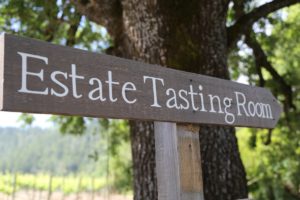

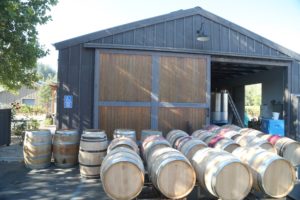 Anderson’s Conn Valley Vineyards is located a few miles from the Silverado Trail, accessed via windy and narrow roads meandering through rolling hills. Their property is not flat but rather a series of rolling hills next to valley floor land; the physical winery is located on the lower part of the property at an elevation between 400-600 feet. The winery location is marked with very few signs until arriving at their main gate. Allow about 10 minutes to reach the winery from the Silverado Trail.
Anderson’s Conn Valley Vineyards is located a few miles from the Silverado Trail, accessed via windy and narrow roads meandering through rolling hills. Their property is not flat but rather a series of rolling hills next to valley floor land; the physical winery is located on the lower part of the property at an elevation between 400-600 feet. The winery location is marked with very few signs until arriving at their main gate. Allow about 10 minutes to reach the winery from the Silverado Trail.
Todd Anderson & his parents Gus & Phyllis originally built the winery and planted the vineyards from scratch; their original intent was to grow and sell grapes. Gus was raised in Michigan and was an orthodontist for 30 years in both the Midwest and in California. In the 1960s and early 1970s, he owned a 400 acres farm along the banks of the Menominee River. Todd was raised and worked on this farm, his early introduction to farming and soils influencing his later career. He has a degree in Geology from the University of Pacific in Stockton. He was the winemaker for many years until the business grew to the extent that he had to hire a winemaker and now employs a small winemaking team.
When the Anderson’s initially looked at this property it was not for sale despite their interest in purchasing it. However, the Anderson’s persevered and eventually were able to acquire the 40-acre site. The property had previously been a prune orchard and was planted to grapes as early as around 1900. One previous owner, Ivar Asplund originally from Finland used the property for ranching from the 1920s through the 1960s. The winery dates from 1983 with their first commercial vintage in 1987; they produced 487 cases of wine that year. The Anderson’s Conn Valley 1988 Cabernet Sauvignon (only their second vintage) was highlighted on the front cover of one of the Wine Spectator magazines, helping bring them early exposure in the right circles.
Two sets of caves are on the property including the primary cave housing Anderson’s Conn Valley and a smaller one, which was used for many years by Gus Anderson (who died in 2016 at age 86) for his own winery Eagle’s Trace (no longer producing). The lower cave tends to be slightly cooler than the upper cave and is now used for production of Ghost Horse wines. The lower and older cave was drilled by contemporary Napa Valley wine cave pioneer, Alf Burtleson; the larger cave was drilled by Nordby Construction.
Breezes from nearby Lake Hennessy arise in the afternoon and this cooling contributes to the slow maturation of grapes. The grapes are picked in the the cold of the early morning where the temperatures are usually in the 40s and then immediately brought into the cave which has a temperature of around 60. This is advantageous because the grapes slowly reach fermentation over the next 4 to 5 days, allowing the flavors to really develop as the yeast used starts to kick in at the higher cave temperature.
The winery has employed several vineyard managers and vineyard management companies over the years. Today Todd overseas the management of both Anderson’s Conn Valley and Ghost Horse Vineyard.
In 2023 Anderson’s Conn Valley Vineyards began testing out a unique practice within their vineyards. They laid down strips of reflecting foil on the ground between rows, testing out a small section of the vineyard. The foil reflected light up into the grapes; they discovered that this increased color during extraction in the cellar. As a result of this desired effect, in 2024, their entire vineyard was layered with this foil. And these are also used at Ghost Horse Vineyard.
Todd is not the only winemaker in the family; his father Gus was a winemaker and Todd’s son Mike runs the cleverly named MGTA Cellars using the first initial of his name, his father and his grandfather. Incidentally, according to Todd, Gus’s early introduction to premium Burgundy and Bordeaux wines was while in the Air Force stationed in Riverside, CA. In 1955 while visiting a General’s home he tried wines from the General’s personal collection.
Hospitality
Visitors to the property will sometimes be hosted by Todd, who strikes a larger than life pose and personality at 6’5″ and is often wearing his trademark black cowboy hat, but more likely by one of their hospitality staff or sometimes their winemaker. Visits are personalized experiences which can last a long time – depending on who provides your tasting experience. If your tasting is with Todd, the conversation flows effortlessly, and tastings can often last several hours.
If you do not want to be rushed, set aside several hours for a visit. The focus of their quick tour is educational; visitors are shown part of the vineyards, wine production facilities (the original winery is an old barn the family converted) and the main cave. Guests are treated to a wide variety of wines from bottle and sometimes from barrel while relaxing and seated in a small alcove in the larger of the two caves.
The hosts create a welcoming environment and enjoy answering questions about wine making, production, growing grapes and really anything related to wine.
A mantra Todd has preached since Anderson’s Conn Valley began seeing visitors for tastings, is if you don’t know much about wine, you are more of an expert than he is or anyone else who works at the winery. You don’t have preconceived notions about what wine should be – and the most important consideration is recognizing which wines you enjoy and which wines you don’t. Anderson’s Conn Valley makes their living by selling wine, but their focus is on education. And visitors really appreciate this.
Some of their smaller production wines are only available for tasting or purchase through visits to the winery.
—
Todd remembers one of his earliest visitors; a lady informed him that she had no interest in tasting reds and wanted to exclusively focus on trying white wines. While swirling one glass she took a sniff and then asked if it was ok to try it. She said something like, “oh my God, this feels so good”. And it was at this moment that Todd realized wine is not only about smell and taste, but also about mouth feel. A wine with a pleasant mouth feel usually indicates balance.
Anderson’s Conn Valley Vineyards produces wines from both their estate vineyard as well as purchased grapes from several vineyards in Napa Valley and also outside of Napa Valley. Several of their original cuttings came from budwood secured from iconic vineyards in the valley including Bonny’s Vineyard in Oakville (Bonny & Justin Meyer, the co-founders of Silver Oak), Eisele Vineyard in Calistoga and through Flora Springs, a selection from Jordan Vineyard in neighboring Sonoma County.
And there is the time he first met Robert Parker. Todd was working at what was their winery/machine shed on property when he received a call from Parker informing him he had a bottle of Anderson’s Conn Valley at dinner the previous evening. He asked Todd if he accepts visitors and then said, “please don’t tell anyone I will be coming to see you”. Todd thought that request was odd, but he had no idea who Parker was at the time and his reputation. Parker visited with Todd that October and returned every October until he retired. He enjoyed the Anderson Conn Valley wines and referred to their production as the “Burgundy and Bordeaux” producer of Napa Valley referencing more complexities and tertiary flavors than many of the young wines being produced in Napa showed at that time.
1982 was the first year that Todd produced wine for himself; it was from old vine Zinfandel located on site of what is now the hotel, Southbridge Napa Valley in St. Helena. Parker at one point asked Todd where his degree in viticulture was from. Todd informed him he learned by doing and from the ‘old timers’ in the valley. And he has plenty of associated memories of his interactions with some of these winemaking visionaries.
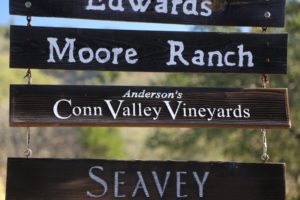
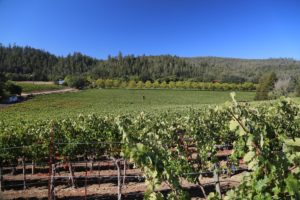 Todd met Justin Meyer in 1982; he was looking for plant material to grow at Anderson’s Conn Valley. He approached Meyer about purchasing cuttings from Bonny’s Vineyard. Meyer immediately said no; he would provide them at no charge and told Todd to come by the vineyard later. Todd did so and was surprised when he arrived to discover that Meyer had already cut and packed the budwood. Todd remembers hanging out with Justin on the back of his F1 pickup truck, smoking a cigar and drinking a vintage of Silver Oak bottled Bonny’s Vineyard Cabernet Sauvignon. The first single bottling from vines at Anderson Conn Valley Vineyards originating from Bonny’s Vineyard cuttings, will be from 2024.
Todd met Justin Meyer in 1982; he was looking for plant material to grow at Anderson’s Conn Valley. He approached Meyer about purchasing cuttings from Bonny’s Vineyard. Meyer immediately said no; he would provide them at no charge and told Todd to come by the vineyard later. Todd did so and was surprised when he arrived to discover that Meyer had already cut and packed the budwood. Todd remembers hanging out with Justin on the back of his F1 pickup truck, smoking a cigar and drinking a vintage of Silver Oak bottled Bonny’s Vineyard Cabernet Sauvignon. The first single bottling from vines at Anderson Conn Valley Vineyards originating from Bonny’s Vineyard cuttings, will be from 2024.
Some of the first grapes from Anderson Conn Valley Vineyards were sold to Joe Heitz at Heitz Cellar. Todd remembers delivering grapes to Heitz in 1985 or 1986 in 5-ton gondolas. Joe walked out of his home when the grapes arrived; Todd immediately offered a handshake, but Heitz walked right by him, focused in on the arriving grapes. Joe approached the hopper with both his hands on his hips, noticing some leaves within the grapes and said, “if there is a leaf in the next gondola I’m rejecting the rest of the grapes”. Todd sprang into action and told his employees to please remove any leaves from the gondolas.
Todd returned to Joe and mentioned there would be be no more leaves – and offered to shake his hand. Joe again ignored his offer and walked back into his house. He returned with a bottle of Martha’s Vineyard Cabernet Sauvignon and forcefully shoved it into Todd’s gut and said, “here take this”, followed by something like, “hopefully you will be able to make wine like this someday”. Today, one of Todd’s great regrets is that he drank that bottle young and that he no longer has it.
Todd does things differently here, but not just for the sake of being different. Rather, creativity is an integral part of his character and he has always been willing to embrace and try new ideas. His palate directs and chases desired characteristics in his wines including sight, smell, taste, texture and an overall balance. These wines are always fully ripe, but never cross into the territory of being opulent. And that is a very important distinction. They are meant to be consumed in their youth, are food friendly, and have all the attributes for being highly cellar worthy.
Select Wines
Anderson’s Conn Valley was one of the first wineries in Napa Valley to inhibit secondary fermentation (malolactic fermentation) on their Chardonnays with the intent to create a wine that does not have overt buttery characteristics or a creamy texture. A byproduct of secondary fermentation is diacetyl which can cause the buttery flavors in wines. Todd told us that often guests mention they don’t like Chardonnay but after trying his Chardonnay, they decide they do in fact enjoy Chardonnay.
In the cellar, they always rack into a stainless steel barrels located on wheels with the wines returned to the same barrel as before. They keep careful track of each barrel and do not consider blending until typically between 6 to 12 months. Todd uses a clock analogy to describe the quality of each barrel; barrels at 12pm are considered their top lots with slightly lower ratings at 1pm and 2pm. Barrels designated at the 3pm mark or ‘later’ are bulked off.
Whites
The 2020 Anderson’s Conn Valley Vineyards Sarah’s Cuvee is 73% Sémillon, 21% Sauvignon Blanc, 5% Pinot Blanc and 1% Chardonnay. The Sémillon is from 50 year old dry farmed vines. The bouquet is attractive offering scents of red delicious apple, gooseberry, pomelo, peach and comise pear. Minerally and flinty, the palate offers flavors of green apple, honeydew melon, kiwi and pomelo. Its texture is fleshy texture and creamy, not surprising considering Sémillon is the dominant variety in this blend. Medium acidity. The finish is bright and balanced. We immediately thought of pairing this wine with fresh seafood, perhaps halibut. The alcohol is a refreshing 13.1%.
The 2018 Anderson’s Conn Valley Vineyards Sarah’s Cuvee 100% varietal Sémillon, like their Sauvignon Blanc is also from the same old block in Yountville. The bouquet shows aromas of dried straw, and a sweetness as the wine opens further including honeysuckle. It was still a bit closed aromatically at the time of our tasting and needs time to open to tease out the aromatics. Rounded on the palate with mouthwatering acidity accompanied by flavors of kiwi and green apple. A brightness lingers all the way until the end.
Anderson Conn Valley used to produce a Sauvignon Blanc from Lake County but they no longer source grapes from Lake County, preferring to work with vineyards closer to home.
The 2018 Anderson’s Conn Valley Vineyards Sauvignon Blanc is a blend of 90% Sauvignon Blanc and 10% Sémillon; both varieties are from Yountville. The Sémillon in particular is worth highlighting; it’s from a block that dates back to the early 1960s, perhaps the oldest Sémillon in Napa Valley. This wine was 80% barrel fermented in used French oak, 10% in stainless steel tanks about 10% in Acacia puncheon. Winemaker at the time of our tasting this wine, Robert Hunt mentioned he uses the Acacia to help give some aromatic lift to the bouquet. Offers aromas of lemon/lime and a floral note including citrus blossom and honeysuckle. The texture is slightly rounded but complemented nicely by the bright acidity. Notes of green apple and pear on the palate. Very bright mouthwatering finish.
Reds
Syrah
The 2022 Anderson’s Conn Valley Vineyards Sarah’s Syrah, Lodi is deep ruby; highly aromatic and fruity, the bouquet offers aromas of plum, blackberry, Persian mulberries with a lovely floral note including lilacs. And there are pronounced baking spice characters including nutmeg, clove and cinnamon stick with a nuance of chocolate. Just as fruit driven on the palate as on the bouquet, there are flavors of dark raspberry, plum and blueberry. The tannins are grainy but not gritty, an important distinction with a light and persistent drying character. For reference, we tasted this wine 1 week after it was bottled in 2024. The finish is juicy and bright. Some of the baking spice notes on the bouquet are also mirrored on the palate. This wine was made by bleeding off a small amount of juice (saignée) in order to concentrate the flavors and was aged entirely in American oak barrels. It is already, clearly a crowd pleaser.
Red blends
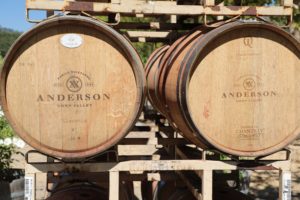
 The 2018 Anderson’s Conn Valley Vineyards Jygantor Red Wine is a blend of 64% Petit Verdot and 36% Cabernet Sauvignon. This wine is deep ruby; the immediate adjective we noted when sniffing this wine was ‘fresh’ – for reference we tasted this wine 6 years post vintage. The bouquet offer aromas of plum, boysenberry, blackberry and baking spices including cinnamon, vanilla and a light toasted character. As bright on the palate as the bouquet, the wine’s juicy character offers more red-fruited than dark fruited flavors, including plum, cherry and currant. The tannins are gravelly textured and pace the fruit in tandem on the finish along with a note of toasted oak. Speaking of oak, for some of the Anderson Conn Valley and all of the Ghost Horse red wines, Todd uses a 200% new French oak program. The wines generally spend 1.5 years in one new barrel before being transferred to another new barrel for an additional 1.5 years of aging. One would think the oak would dominate in such bottlings, but in actuality while it is noticeable its surprisingly well-integrated.
The 2018 Anderson’s Conn Valley Vineyards Jygantor Red Wine is a blend of 64% Petit Verdot and 36% Cabernet Sauvignon. This wine is deep ruby; the immediate adjective we noted when sniffing this wine was ‘fresh’ – for reference we tasted this wine 6 years post vintage. The bouquet offer aromas of plum, boysenberry, blackberry and baking spices including cinnamon, vanilla and a light toasted character. As bright on the palate as the bouquet, the wine’s juicy character offers more red-fruited than dark fruited flavors, including plum, cherry and currant. The tannins are gravelly textured and pace the fruit in tandem on the finish along with a note of toasted oak. Speaking of oak, for some of the Anderson Conn Valley and all of the Ghost Horse red wines, Todd uses a 200% new French oak program. The wines generally spend 1.5 years in one new barrel before being transferred to another new barrel for an additional 1.5 years of aging. One would think the oak would dominate in such bottlings, but in actuality while it is noticeable its surprisingly well-integrated.
The Jygantor is an homage to both Todd’s lifestyle and his lifted yellow Hummer which he acquired in 2006. In fact an image of this vehicle is on the front label. And its origins are from the original film, Night at the Museum starring Ben Stiller and Owen Wilson. One of the quotes by Wilson’s character, Jedediah was, “No problemo, Gigantor”. And both men were riding in a yellow Humvee when they attempted to round up escaped dinosaurs from New York City’s American Museum of Natural History.
When game show host Pat Sajak visited Anderson’s Conn Valley, he inquired about Todd’s license plate on the Humvee referring to Jygantor, “what does it say”, he asked. Todd’s reply was, “do you need to buy a vowel?”
“Right Bank” is always a blend of Merlot and Cabernet Franc; the 2017 Anderson’s Conn Valley Vineyards Right Bank is 56% Cabernet Franc and 44% Merlot. Shows attractive fruit on the bouquet including plum, dark cherry and dark raspberry accompanied b y licorice, mocha and hints of cedar. Features dark fruit on the palate with tannins that fit nicely into the wine’s profile – there are no harsh edges here. Lingers with a smoky tobacco note, cedar and white pepper.
Eloge is their Bordeaux styled red blend built upon a backbone of predominately Cabernet Sauvignon.
The 2018 Anderson’s Conn Valley Eloge is deep ruby and nearly opaque in the glass; the first aromatic we noted was Santa Rosa plum, followed by blackberry, boysenberry, Persian mulberry and dark cherry with an underlying note of mocha and cocoa powder. Also a hint of sage. The palate shines brightly with a red-fruited profile of primarily, raspberry, currant and cranberry. Fresh. Vivacious. The finish lingers with a note of dried tobacco spice. This wine still acts like a teenager with plenty of latent energy and shows well 6 years post vintage at the time of our tasting. The still tightly woven finish features grainy and gritty tannins, which exert a firm and long lasting grip with a dusty character. Mouth watering. Begs another sip. Pair this bottling with a well-marbled Wagyu steak.
The 2017 Anderson’s Conn Valley Vineyards Eloge is a blend of 62% Cabernet Sauvignon, 29% Cabernet Franc and 4% Petit Verdot. Offers fruit forward aromatics including of blackberry and boysenberry, tinged with some secondary aromatics including hints of tobacco, dessert spices and some dust nuances. This wine has some weight but it is also juicy across the palate; it offers plenty of complexity without being heavy contributed in part by its lifted acidity. Slightly savory and mouthwatering. Darker tannins linger with some grip and notes of tobacco leaf and cracked peppercorn. Eloge in French translates to “praiseworthy” in English.
Cabernet Franc
The 2016 Anderson’s Conn Valley Vineyards Gustaf Cabernet Franc is 86% Cabernet Franc and 14% Merlot. It is dark ruby in color; the bouquet sports catchy aromatics of dark spice, pepper, tobacco, dried rose petal and blackberry. Plenty of depth with mouthwatering acidity. The palate reveals both red and darker fruits but trending more towards high-toned flavors. The tannins are broadly distributed, granular and linger with a light drying character. The texture is a lovely attribute of this wine. The name of this wine is a commonly used Anderson family middle name.
Cabernet Sauvignon
Midlife Crisis, a 100% varietal Cabernet Sauvignon was produced in 2021 to celebrate the 40th harvest of Anderson’s Conn Valley. This was going to be a one time only bottling but its character and demand has warranted that is be produced every year. Only two barrels were produced this vintage, but four new French oak barrels were used during its aging and it received Todd’s 200% new French oak regiment.
The 2021 Anderson’s Conn Valley Vineyards Midlife Crisis is deep ruby and opaque in the glass. The bouquet offers aromas of red chili spice, pink peppercorn and shishito peppers, a variety of pepper we are extremely familiar with. The bouquet is somewhat moody and brooding with additional aromas of forest floor, damp potting soil and sweaty baseball mitt leather. And its fruit notes include raspberry, cherry, and red plum. The savory attributes from the bouquet continue onto the palate. Brightly lit, the juicy and mouth watering palate trends more towards red fruited flavors including cherry and plum. The tannins are grainy, gravelly and persist beyond the fruit on the palate. The finish is earthy with long lasting grainy textured tannins sporting a dusty character. We have been particularly impressed with the red wines from the 2021 vintage in Napa Valley and this bottling is no exception. It is showing in a sweet spot 3 years post vintage at the time of our tasting and has loads of life ahead with the property cellaring.
Aurum (meaning gold in Latin) is a Cabernet Sauvignon based blend whose roots were in their ‘gold series’, wines which were intermittently bottled. However, this wine is now produced every year. The 2018 Anderson’s Conn Valley Vineyards Aurum is 84% Cabernet Sauvignon with the balance being 11% Petit Verdot and 5% Cabernet Franc. It is deep ruby in color. The bouquet sports some floral layers including of rose petals and lilacs, accompanied by red cherry, blueberry, and raspberry. And a distinctive spice note similar to potpourri. Balanced, bright and juicy this wine offers red fruited flavors of cherry, raspberry and currant. The gravelly and grainy textured tannins certainly have been softened by 6 years of age at the time of our tasting but still sport their youthful edges. Firmly gripping but not heavy, their broadly coating texture far outpaces the fruit on the extended finish. This wine has loads of life ahead of it. Fresh, youthful and filled with energy.
Signature Cabernet Sauvignon is a barrel selection which differs each year depending on the vintage. The 2012 Anderson’s Conn Valley Vineyards Signature Cabernet Sauvignon (100% varietal) offers darker fruit notes on the bouquet along with a spicy toasted oak component. As the wine breathes a tinge of mocha creeps onto the bouquet. This wine reflects higher toned fruit with lively acidity which is noticeable on the mouthwatering finish. Offers flavors of red cherry and black currant along with firm slightly chewy tannins which linger for quite some time.
The Estate Reserve Cabernet Sauvignon is the first wine that was produced back in the 1980s (for several years they only produced this one wine). The 2016 Anderson’s Conn Valley Vineyards Estate Reserve is dark ruby in color with an appealing bouquet including some floral notes (rose petal and violets). Somewhat briary and somewhat savory. The palate has plenty of complexity and depth for serious Cabernet Sauvignon enthusiasts with a firm unyielding grip of tannins that persist – along with notes of cedar and some dark spiciness including cracked peppercorn. There is plenty of density in this wine. Sees about 60% new French oak.
And wines were produced from the challenging 2020 vintage. Todd ran the wind machines 24/7 for a period of time to help keep smoke from settling on the grapes during the fires burning in Napa Valley this year. The grapes were harvested into picking bins but were not stacked nearly as high as during a normal vintage. And then using their ozone machine, ozonated water was added to the grapes, left to soak for 45-60 minutes and then the grapes were dumped into other vessels with holes drilled in the bottom for drainage. And in talking to experts, Todd employed several mitigative practices during fermentation. ETS lab results showed no smoke taint in their grapes this harvest.
—
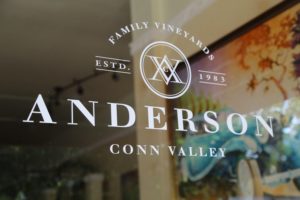 NOTE: Astute local followers of Anderson’s Conn Valley will remember that in September 2017 Anderson’s Conn Valley partnered with the Thorn Hill tasting room on Main Street in downtown St. Helena to offer their wines to visitors. Even some of the entry level Ghost Horse Vineyard wines were available here for a very short while. Visits were by walk-in hosted either at the sit-down tables, the bar or on the small patio in the back where customers could bring and eat their lunch either before or after a tasting. As of October 2018, Anderson’s Conn Valley is no longer tasting their wines here and the Thorn Hill Tasting room is permanently closed. We keep these notes for historical reference.
NOTE: Astute local followers of Anderson’s Conn Valley will remember that in September 2017 Anderson’s Conn Valley partnered with the Thorn Hill tasting room on Main Street in downtown St. Helena to offer their wines to visitors. Even some of the entry level Ghost Horse Vineyard wines were available here for a very short while. Visits were by walk-in hosted either at the sit-down tables, the bar or on the small patio in the back where customers could bring and eat their lunch either before or after a tasting. As of October 2018, Anderson’s Conn Valley is no longer tasting their wines here and the Thorn Hill Tasting room is permanently closed. We keep these notes for historical reference.
Be sure to ask Todd about the many worldwide wine events that he hosts or participates in. He keeps a travel schedule that would cause younger men to beg for a break. Total annual production of Anderson Conn Valley Vineyards is around 5,000 cases. While production used to be primarily distributed to restaurants and retail wine shops, the winery has since transitioned into an almost entirely direct to consumer model. And this is important as rather producing to market quickly for distributors, they now have the luxury of holding the wines until they feel they are ready to be released. And in terms of production, they no longer need to meet distributor quotas; as a result, they are producing more small-lot wines.
Anderson’s Conn Valley Vineyards is a sponsor of Tunnel to Towers, a charitable foundation started in the aftermath of the 9/11 tragedy.
As of our latest update to this review, a very limited number of wines are still distributed in California, Florida, North Carolina and Texas. Sometimes special trips are offered including European cruises. For more information about Anderson’s Conn Valley, to schedule a tasting, to join one of their wine clubs with shipments sent three times per year, or to purchase wines, visit: www.connvalleyvineyards.com.
Signs
Vineyards/Estate
Caves
Ghost Horse World
Todd’s larger than life persona matches well with one of Napa Valley’s most prestigious and limited production wine brands: Ghost Horse Vineyards (first vintage was from 2000). These wines are sought out by wealthy collectors including both domestic and international buyers. Todd counts the production of Ghost Horse World each year in bottles rather than cases.
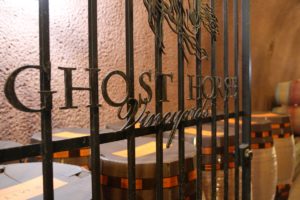
 The only white wine under the Ghost Horse label is a Chardonnay. The Ghost Horse Cabernet Sauvignon (the entry level wine) is among some of the highest priced wines in all of Napa Valley with his other labels Fantome, Apparition and Spectre even more sought out and priced much higher. Premonition was introduced in 2010; this wine takes the Ghost Horse scarcity to the next level; only six, 6 Litre bottles were crafted. But wait, there is one more bottling called Effrayant (meaning terrifying, fearful, frightening or scary). Only 36 bottles were produced from the 2023 vintage, with each bottle selling for $25,000.
The only white wine under the Ghost Horse label is a Chardonnay. The Ghost Horse Cabernet Sauvignon (the entry level wine) is among some of the highest priced wines in all of Napa Valley with his other labels Fantome, Apparition and Spectre even more sought out and priced much higher. Premonition was introduced in 2010; this wine takes the Ghost Horse scarcity to the next level; only six, 6 Litre bottles were crafted. But wait, there is one more bottling called Effrayant (meaning terrifying, fearful, frightening or scary). Only 36 bottles were produced from the 2023 vintage, with each bottle selling for $25,000.
On the price alone, several of the Ghost Horse wines are well above the typical bottle price of the seven established Napa Valley “cult” wineries: Bryant Family, Colgin, Dalla Valle, Eisele Vineyard, Grace Family, Harlan Estate and Screaming Eagle.
The tiny vineyard for this wine (all the reds) is located off of Coombsville Road in Coombsville in the southern part of Napa Valley; the property is 3.08 acres with only one acres of vines originally planted in 1997/1998. All the wines for the Ghost Horse label are 100% varietal. Despite this vineyards’ diminutive size – sub blocks are harvested separately creating each of the Ghost Horse wines. And the clonal material of what is planted on site remains a mystery, even to Todd.
For many years Ghost Horse was only available through personal relationships with Todd and visiting the winery; in later years he selectively distributes the wine to several high-end restaurants and resorts, primarily in Las Vegas.
Todd learned about pricing from Al Bronstein, the co-founder of Diamond Creek Vineyards. Bronstein released one of his early vintages at $100/bottle which at the time was the most expensive 750ml current release in California. During a lunch Todd learned that Bronstein wanted to make two $100,000/bottles wines. Todd asked him why two bottles and Al’s reply was to demonstrate his shaking hand (due to Parkinson’s disease) and told Todd he was likely to drop one of the bottles and wanted a backup. And Todd asked why he would charge so much and Bronstein said something like, “because I have it”, referencing a bottling so rare, that it would be produced only one time with such a high price point, which would cause its perception to be one of great value.
Becoming an allocation member of Ghost Horse Vineyards is not only about the wine but also access to a lifestyle. Serious collectors can visit the winery and choose from a variety of coveted Ghost Horse tasting and experiences including a BBQ, various dinners and a library tasting featuring older vintages.
Membership to this wine club is highly exclusive and ensures one has access to a variety of interesting perks including participating with Todd in some of his adventures such as auto racing, downhill skiing, cigar smoking and other experiences. Originally there were two tiers of membership to this wine club, one starting at $500,000 and the other was one million dollars. When people came to Napa Valley – mentioning the price of these two-tiered wine club memberships always led to an entertaining conversation.
Today several allocation membership options are available including when customers purchase a bottle of Premonition they receive a ‘challenge’ coin which gains access to coveted parties held across the country and at select locations internationally. Three to five of these parties are hosted annually.
And this coin allows access to the Treasury Syndicate, 5 cases Todd hides away in his cellar, not to be opened until they are at least 10 years old. They are older releases typically between 15-20 years old. Those who purchase wines from the Treasury Syndicate only receive a silver coin, but no access to parties.
Select Wines
The 2019 Ghost Horse World Cabernet Sauvignon is deep ruby in color; the bouquet offers an attractive union of both fruit and barrel influences with scents of raspberry, cherry, red plum and a note of red chili spice. This wine smells like the variety. As it evolves it opens to additional layers of mocha and chocolate. Balanced right out of the gate, this wine offers flavors of cherry, plum, blackberry and dark raspberry with a lingering hint of pepper. Its mouth feel is an important attribute worth mentioning. The tannins show a creamy and almost velvety texture – at most we will go as far as to say they feel lightly grainy. Regardless they are well integrated into the seamless and brightly lit finish. A balanced wine in its youth, such as this bottling should be balanced later in its life. Highly approachable at 5 years post vintage at the time of our tasting. Like the other Ghost Horse red wines this bottling was aged in 200% new French oak barrels.
—
For more information about Ghost Horse Vineyards and to join their allocation list, visit: www.ghosthorseworld.com.






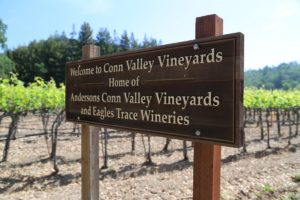
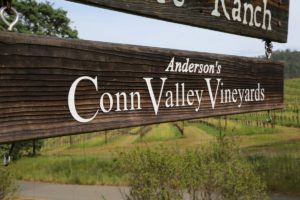
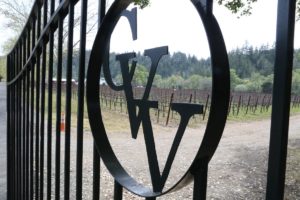
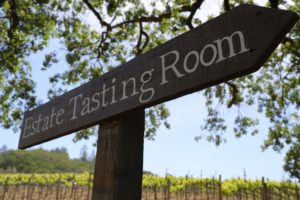
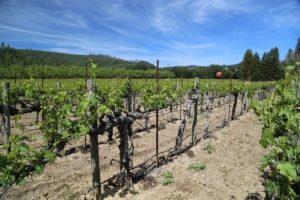
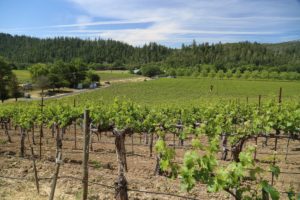
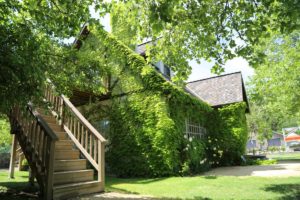
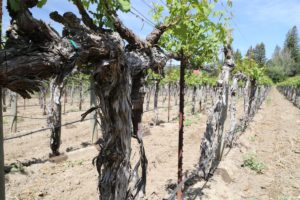
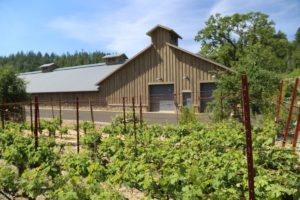
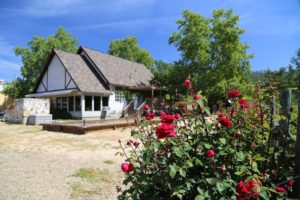
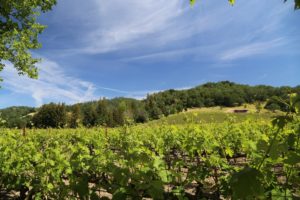

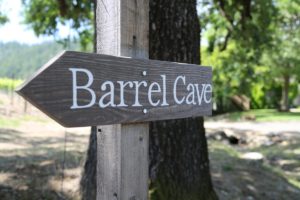
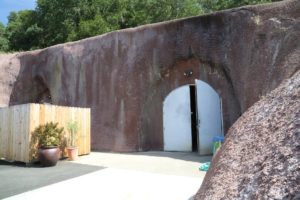
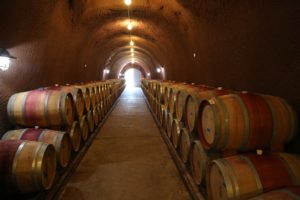
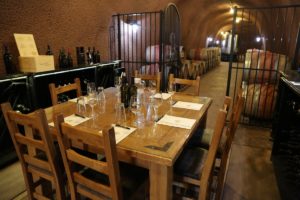
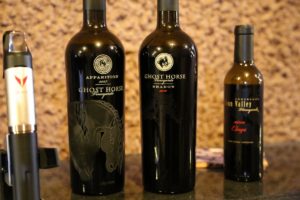
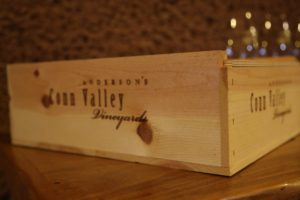
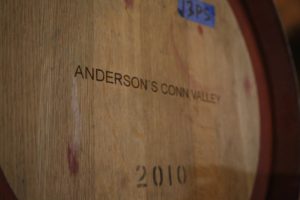
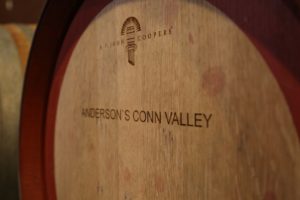
Leave a Reply